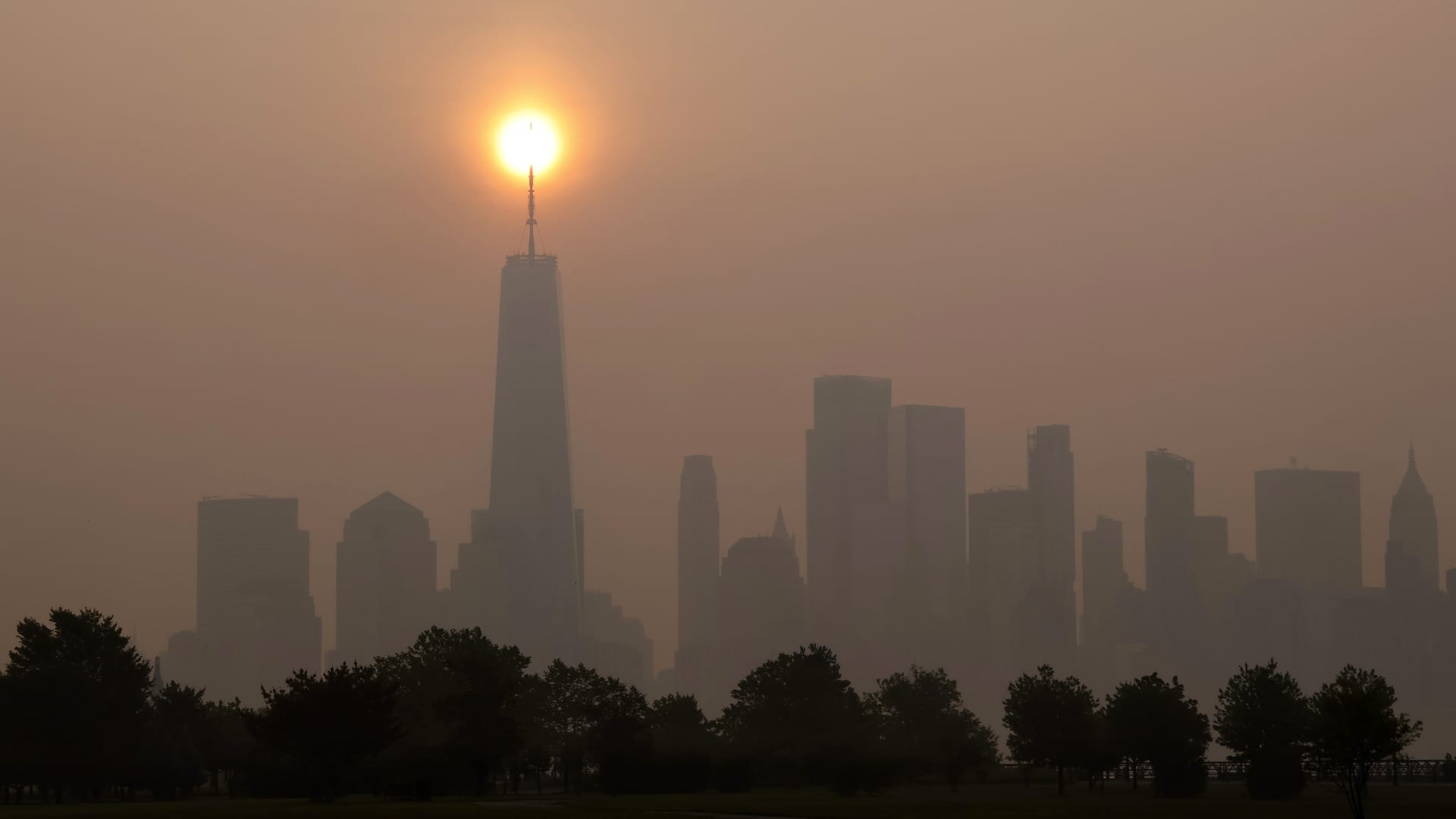
- Europe's Copernicus Atmosphere Monitoring Service on Thursday said that accumulated carbon emissions from Canadian wildfires had soared to 290 megatons in just the first seven months of 2023.
- That is already more than double the previous whole-year record and accounts for over 25% of the global total year to date.
- Astonished climate scientists have warned that the unprecedented nature of what's happening in Canada is a harbinger of what's still to come.
The intensity of Canada's raging wildfires have generated record levels of carbon emissions, the EU's climate monitor said Thursday.
Europe's Copernicus Atmosphere Monitoring Service (CAMS) found that accumulated carbon emissions from Canadian wildfires had soared to 290 megatons in just the first seven months of 2023.
That is already more than double Canada's previous whole-year record and accounts for over 25% of the global total year-to-date.
"In recent years we have seen significant wildfires in the Northern Hemisphere, but this year's fire activity in Canada is highly unusual," said Mark Parrington, senior scientist at CAMS.
"The weather has played a part, with warm and dry conditions increasing the flammability of vegetation and increasing the risk of large-scale fires. We support users in mitigating the impacts through monitoring the fire activity and intensity, and the emitted smoke," Parrington said.
This year's wildfire season has been the worst on record in Canada, with more than 13 million hectares (roughly 32 million acres) burning so far — scorching an area larger than the size of Portugal or South Korea.
Plumes of smoke from hundreds of blazes have blanketed vast swathes of the country in recent weeks, forcing tens of thousands of people to leave their homes and triggering air quality alerts in northern U.S. cities.

The haze of wildfire smoke even drifted across the Atlantic to southern Europe in the second week of June, also causing flight delays and the cancelation of many outdoor events closer to home.
Feeling out of the loop? We'll catch you up on the Chicago news you need to know. Sign up for the weekly Chicago Catch-Up newsletter.
Money Report
Astonished climate scientists have warned that the unprecedented nature of what's happening in Canada is a harbinger of what's still to come.
CAMS said warm and dry weather this year had created tinderbox conditions conducive to the extraordinary scale of Canada's wildfires.
It added that the climate emergency is making such conditions more likely and boosting the chance of a longer fire season — to which El Niño conditions may also have contributed.
Air pollution
The report comes as large-scale fires continue to rage across Canada's western provinces and territories, including within the Arctic Circle.
There are currently 1,036 active fires burning nationwide, and 663 of those are classified as "out of control," according to data in a real-time dashboard operated by the Canadian Interagency Forest Fire Centre.
Significant wildfire activity was also observed in the far east of Russia over June and July, CAMS said, although these fires have not been as widespread as during the summers of recent years.
CAMS said wildfire seasons typically occur from May to October in the northern hemisphere, with peaks in July and August coinciding with the hottest and driest months of the year.
For Canada, this means the blazes could continue for weeks or even months to come.






